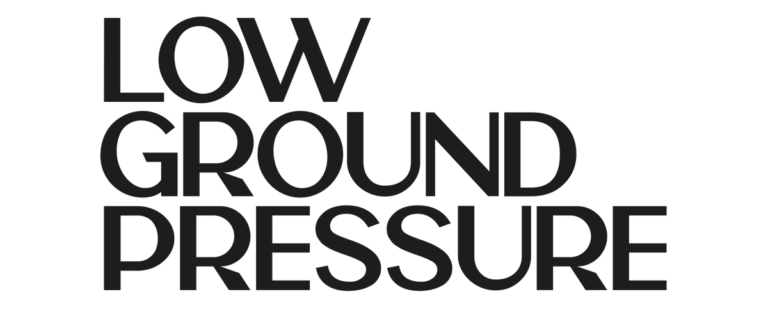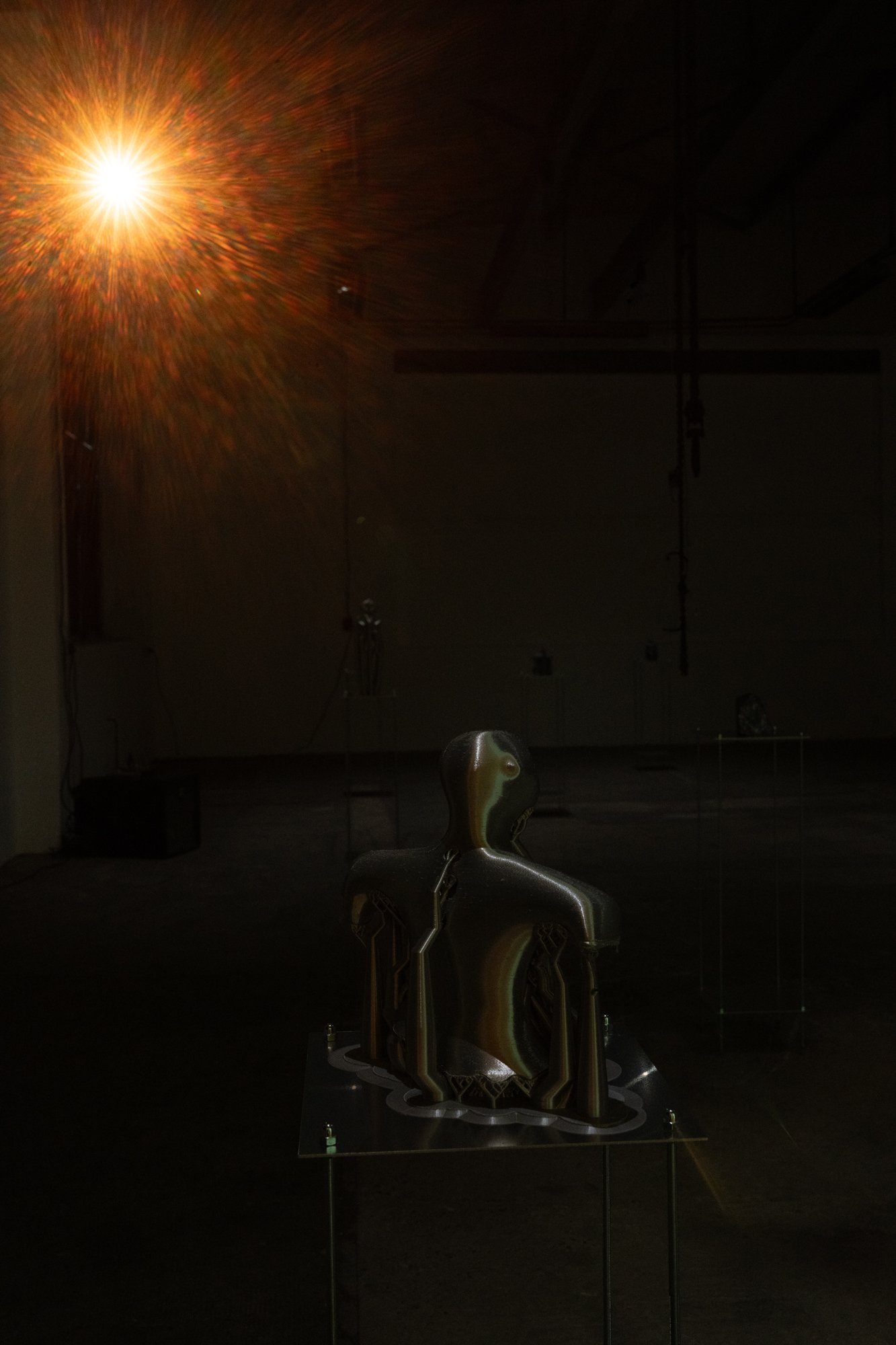
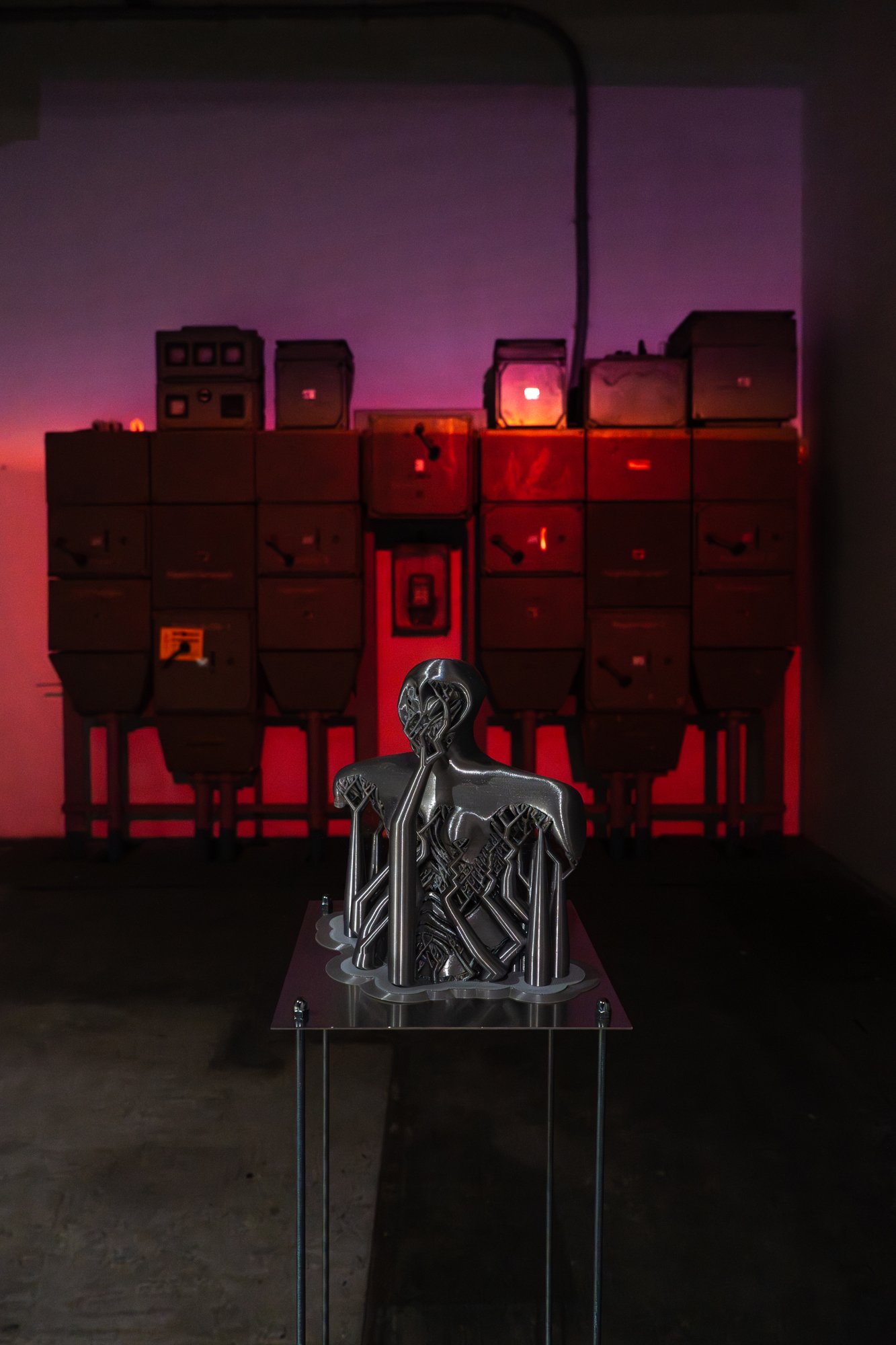
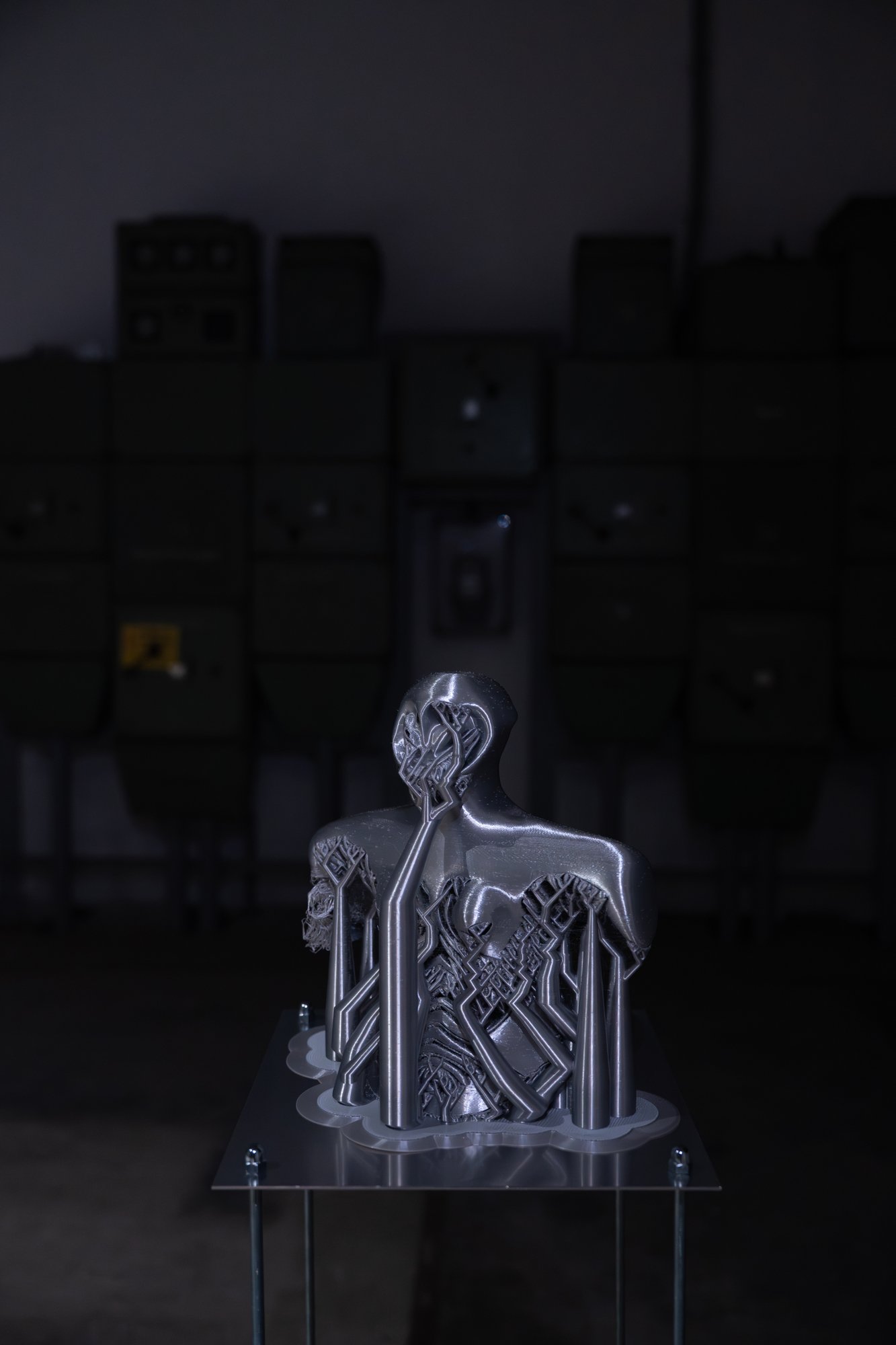
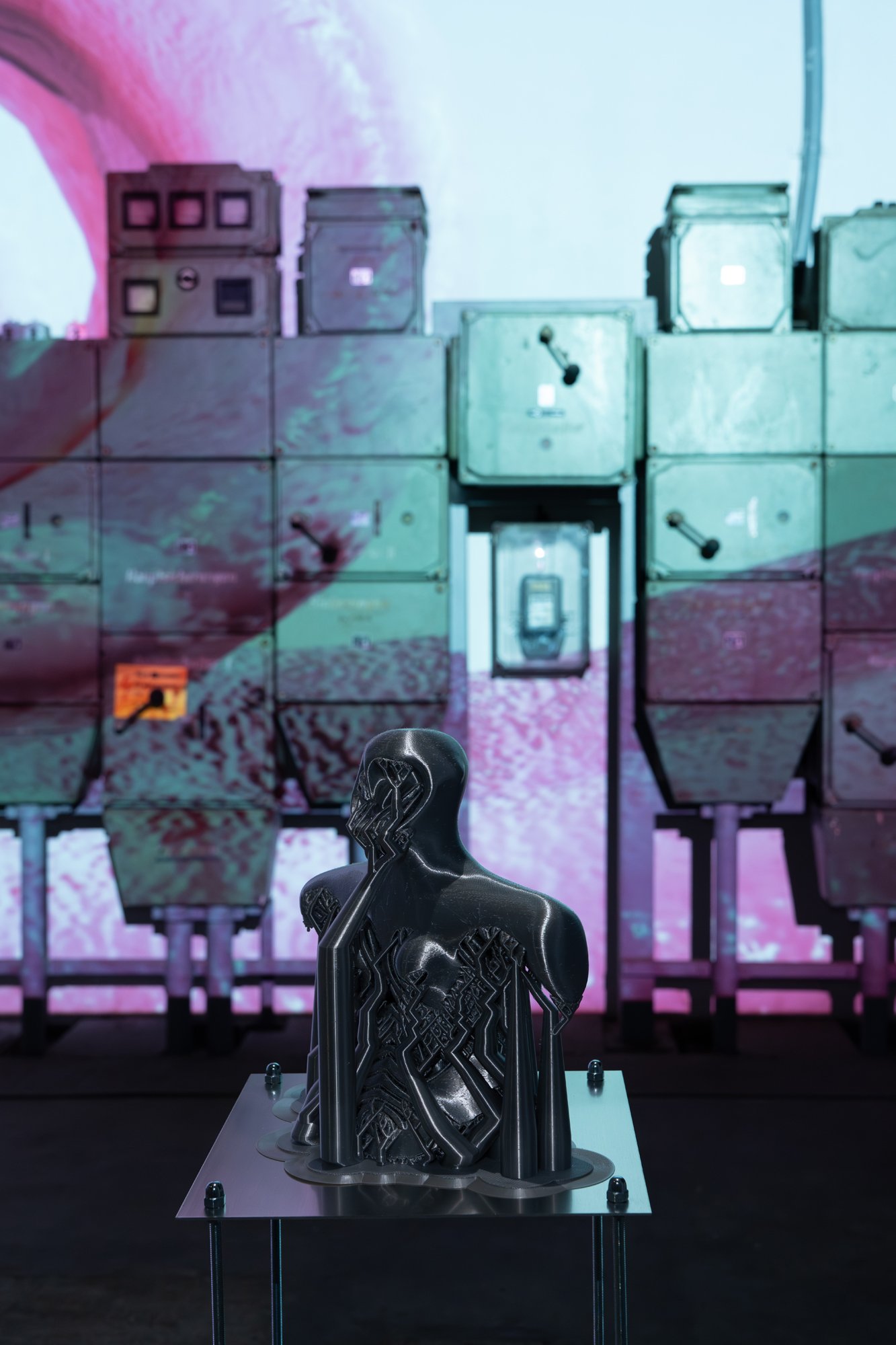
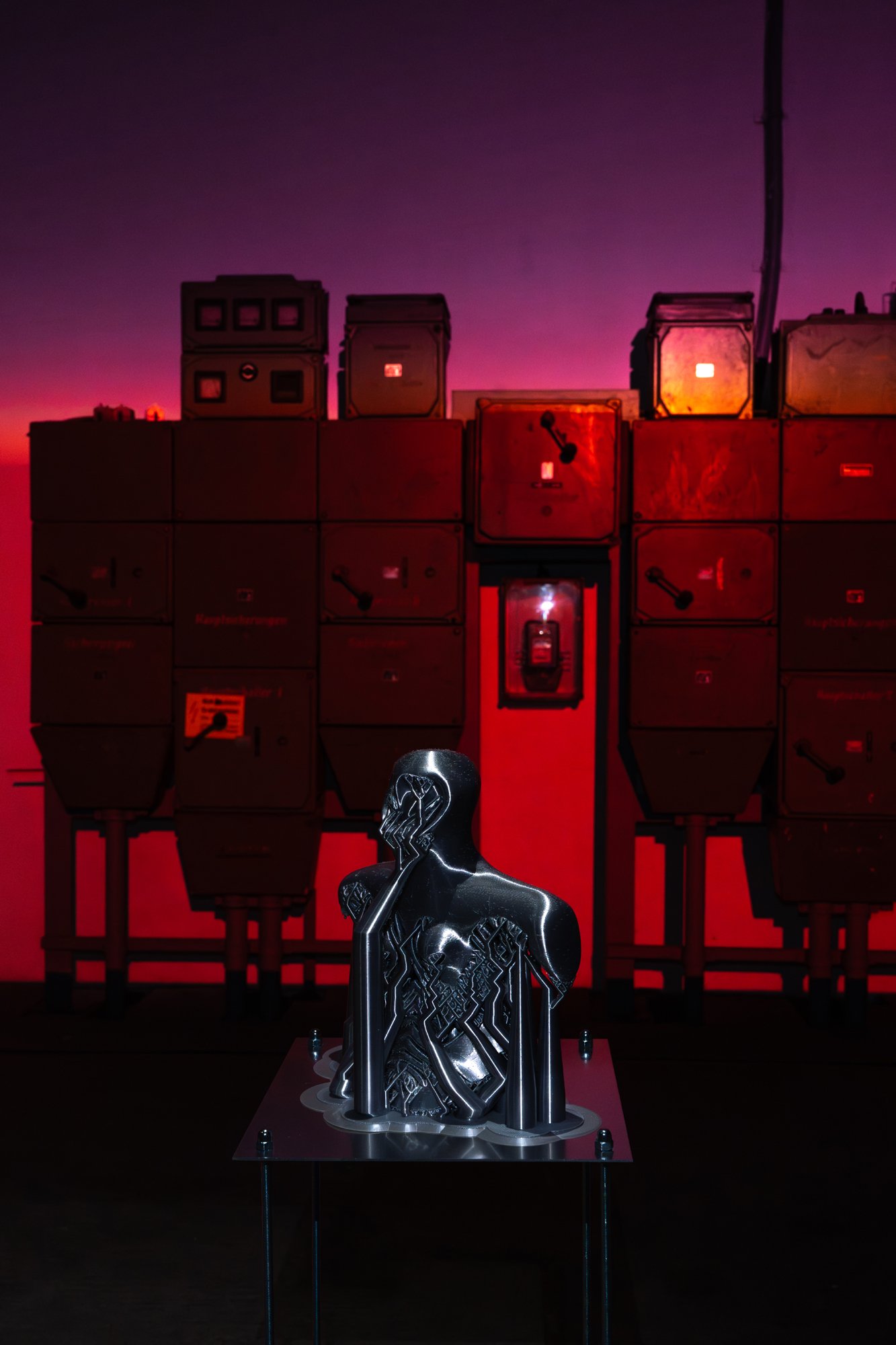
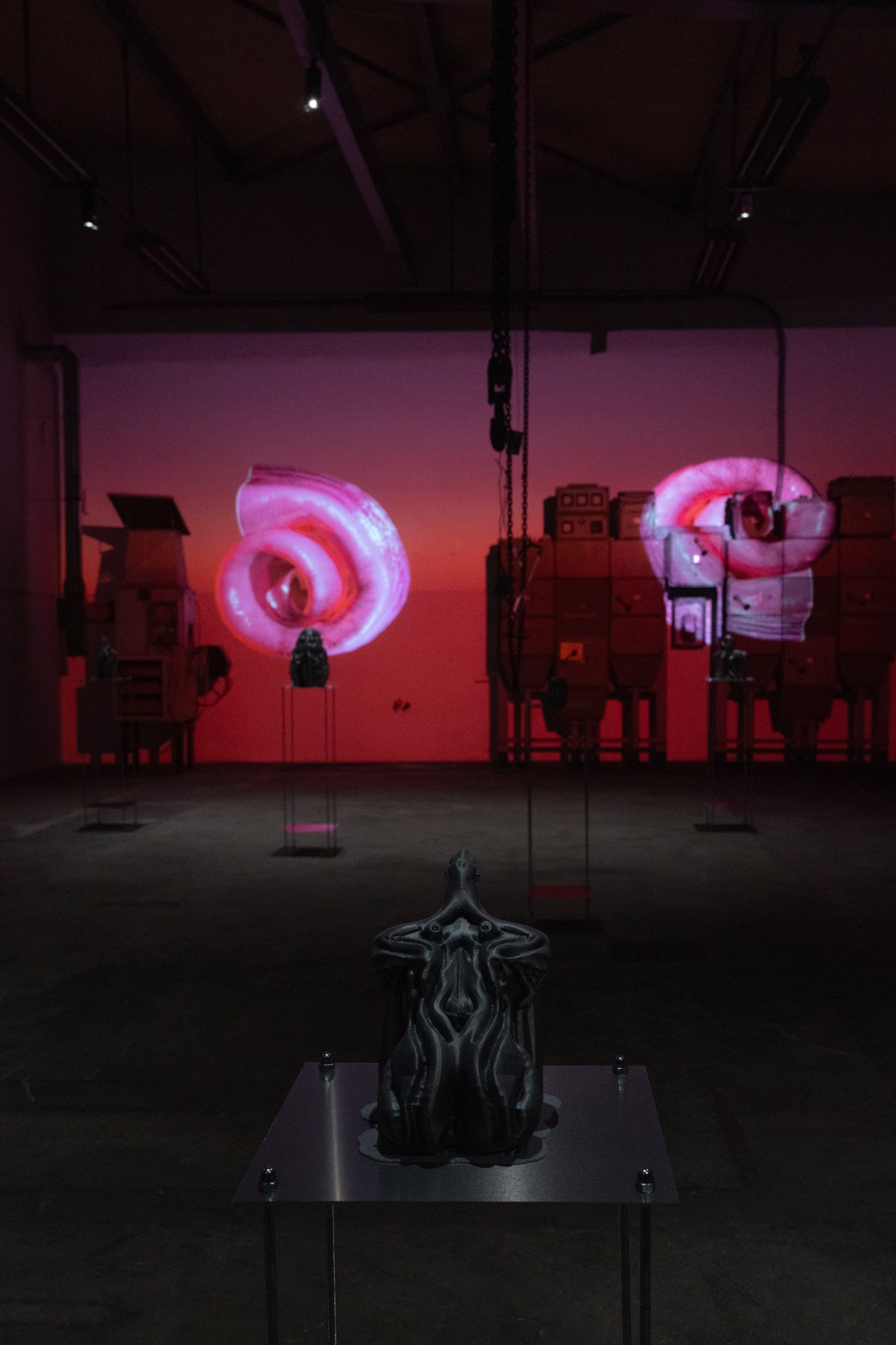
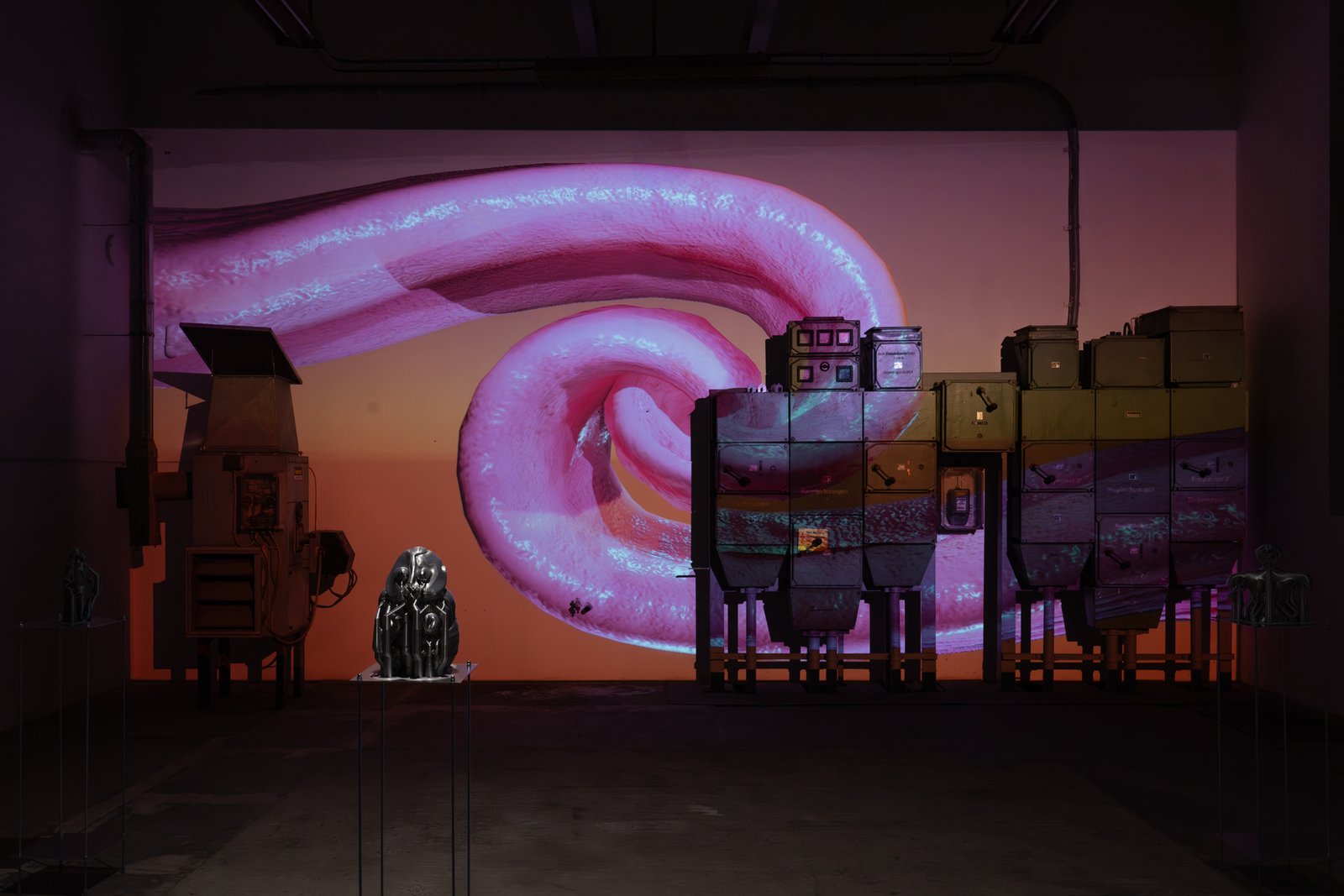
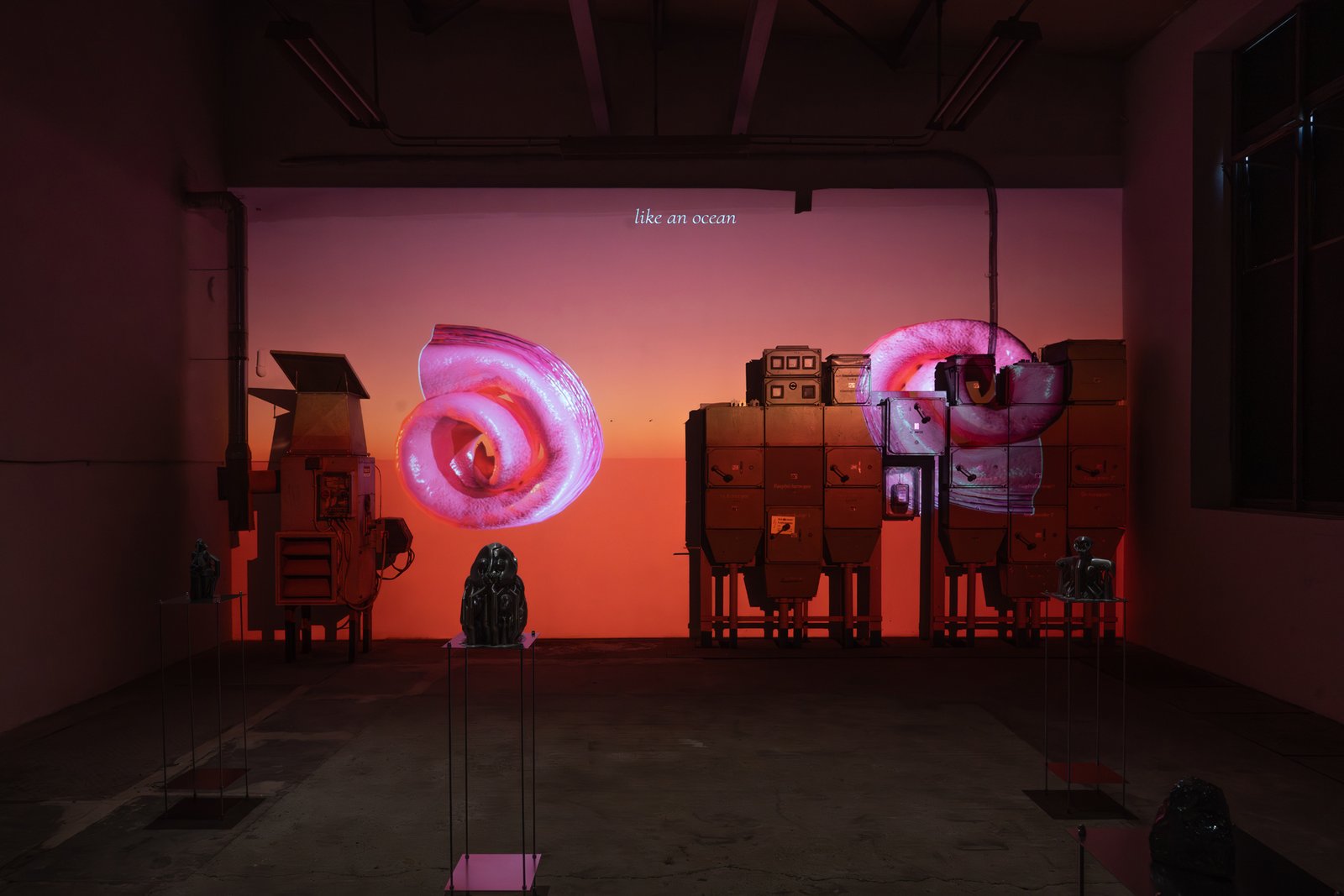

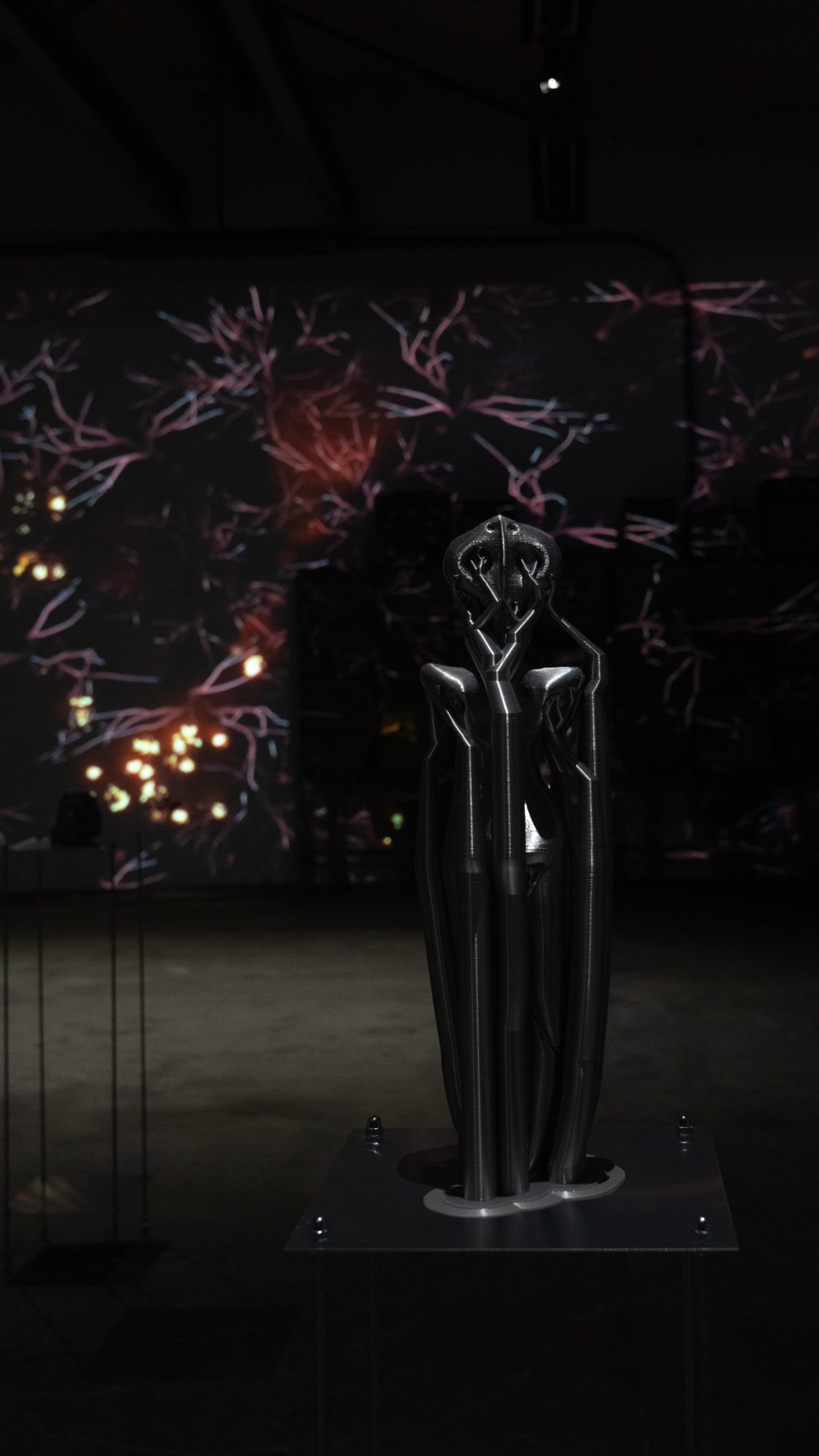
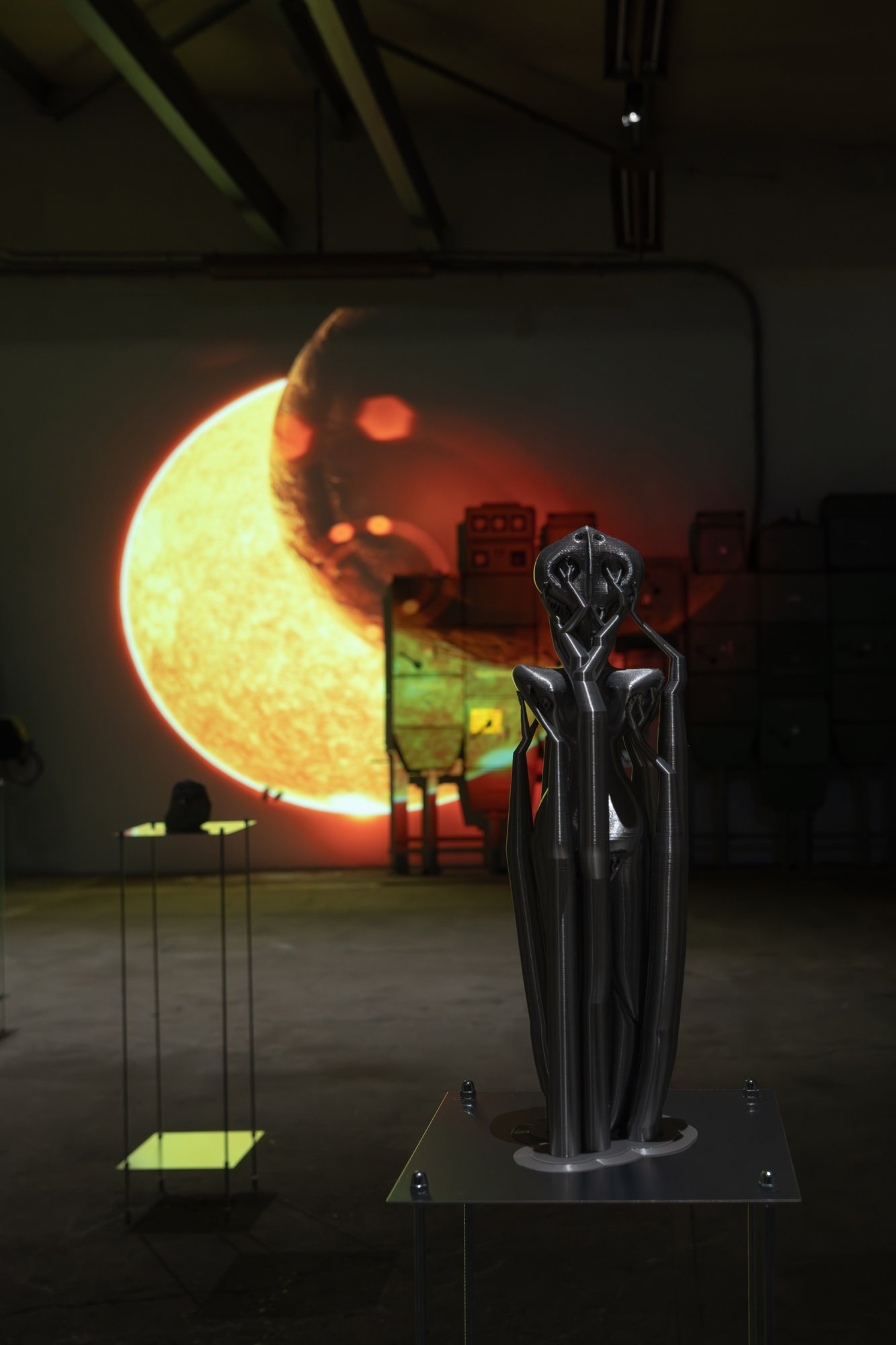

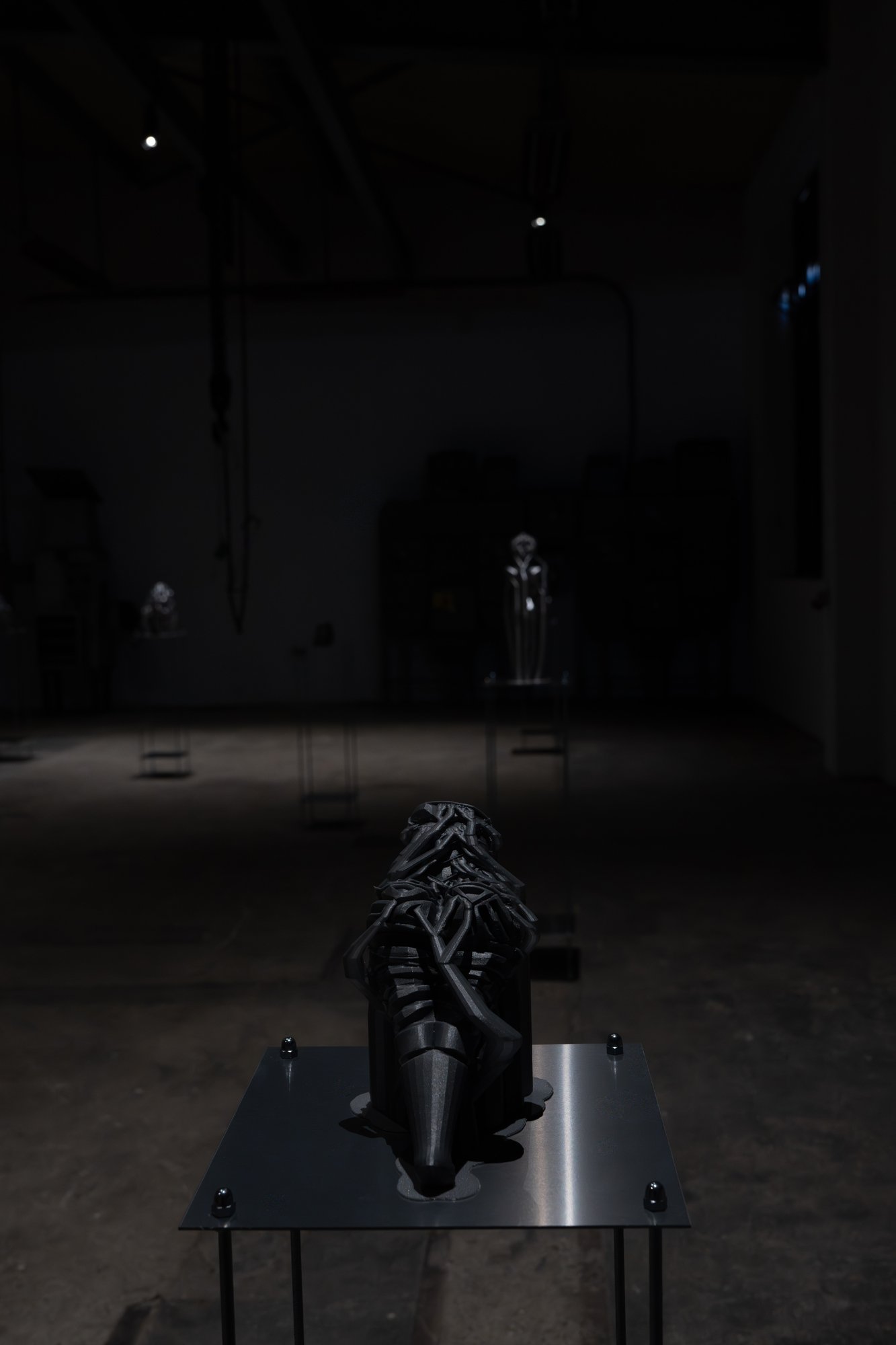
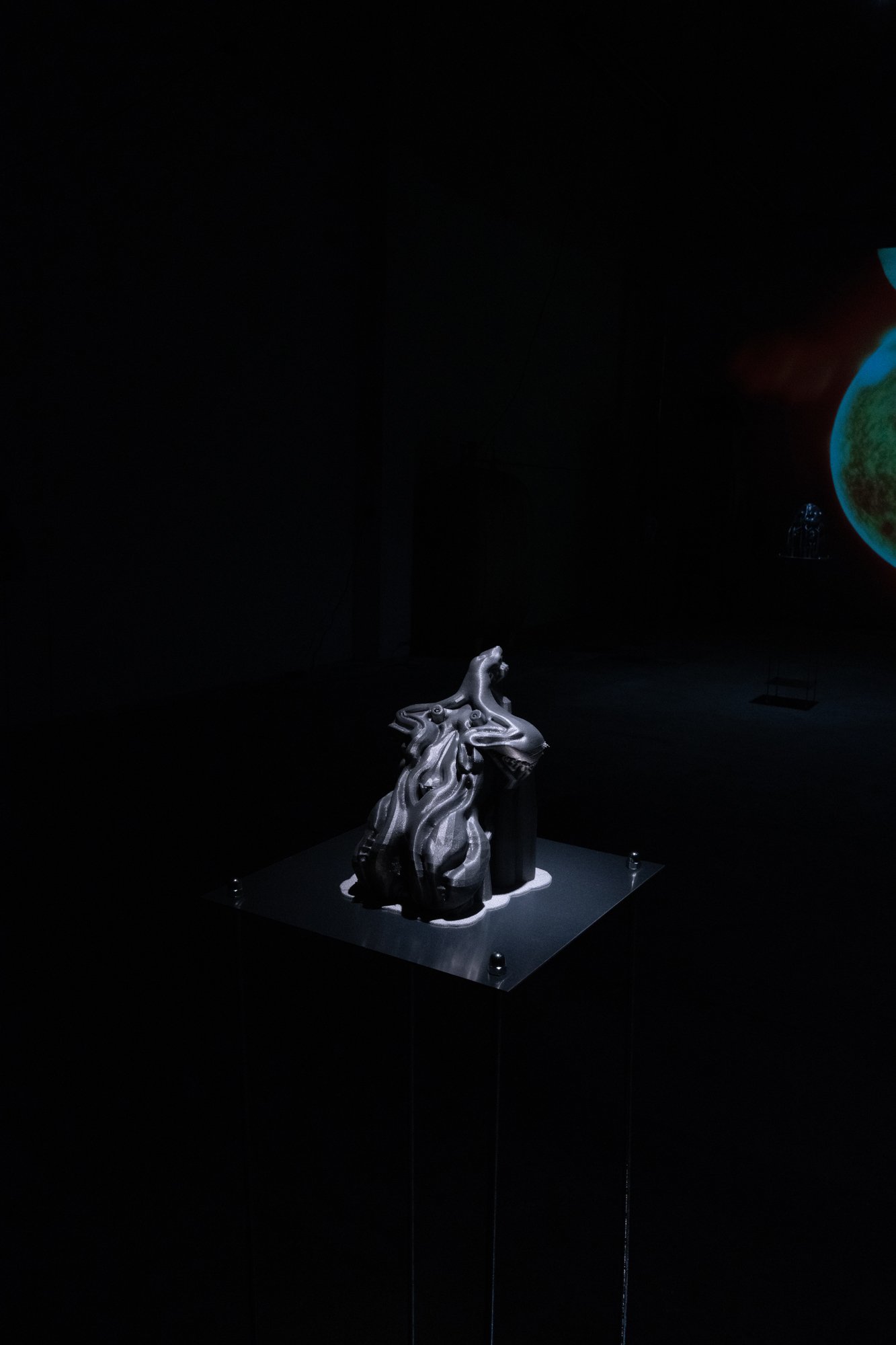
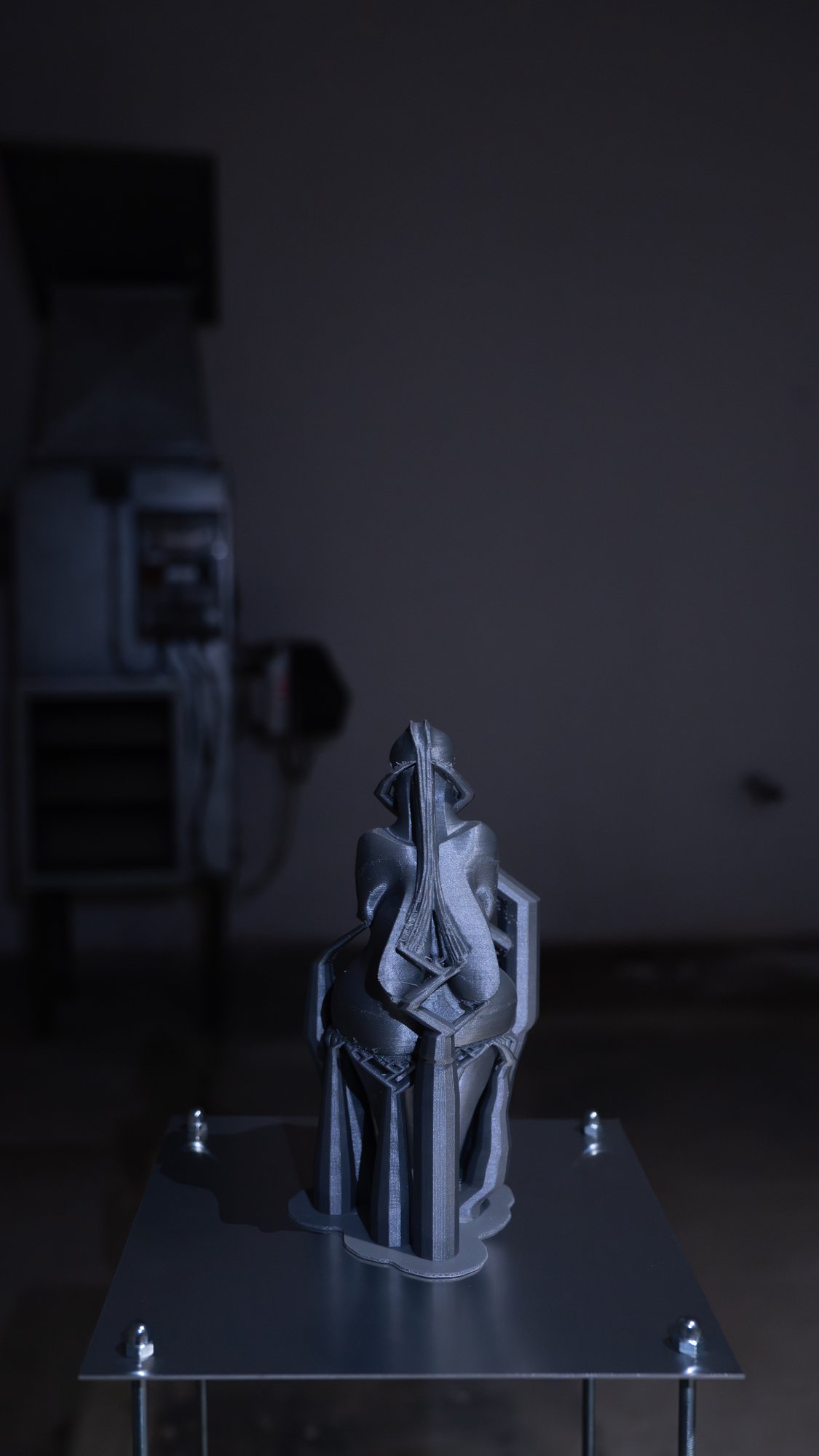
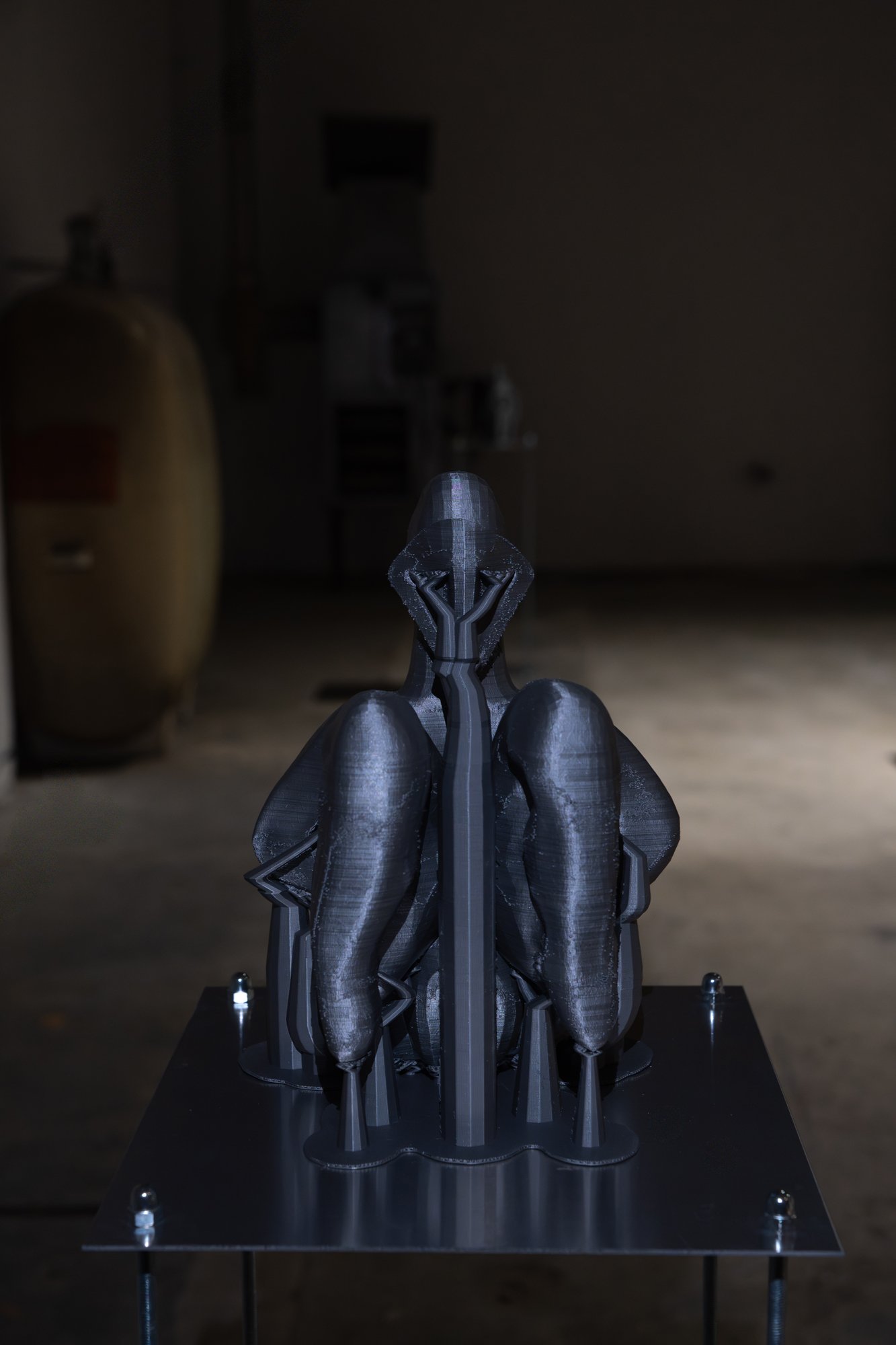
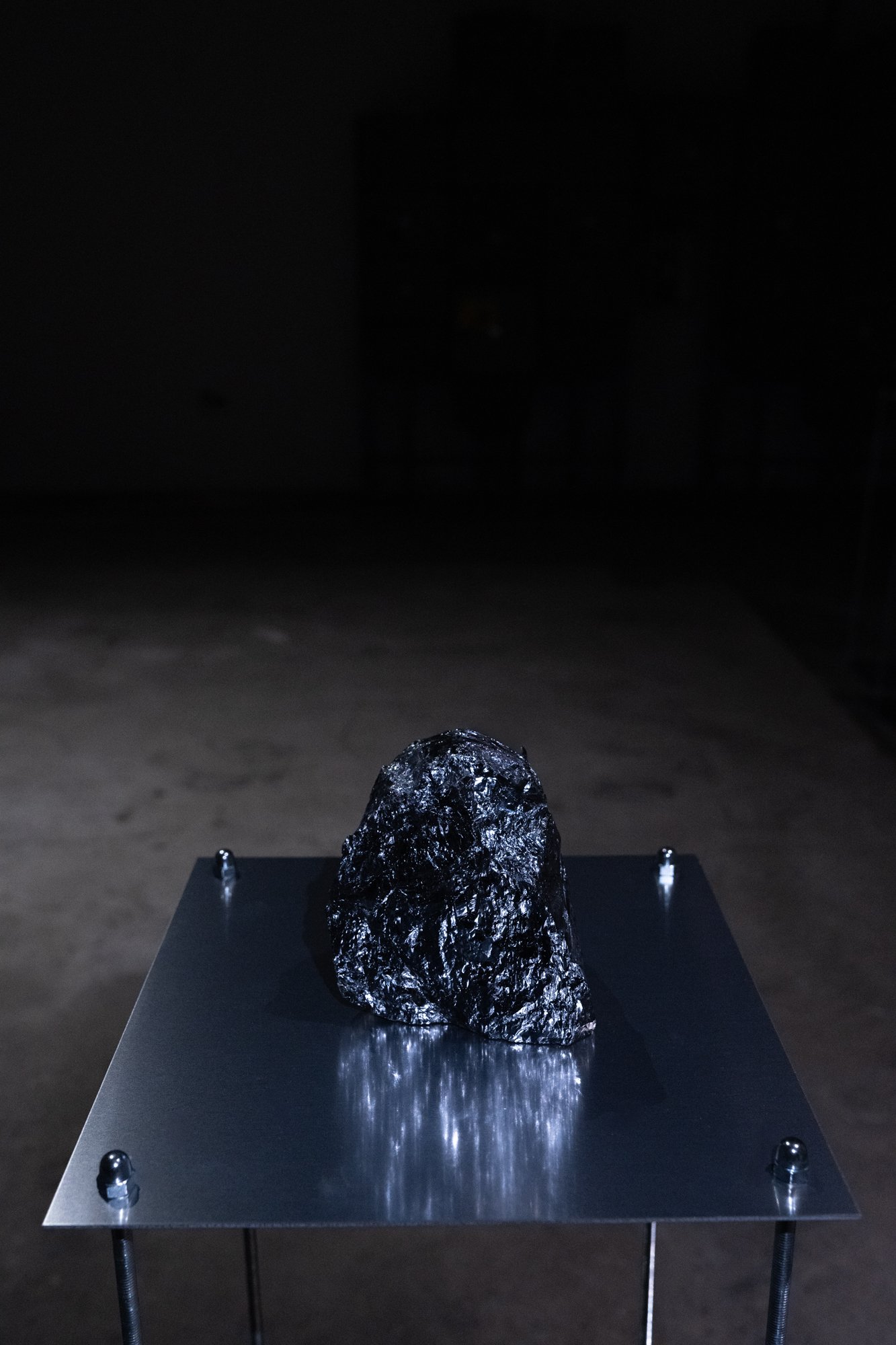
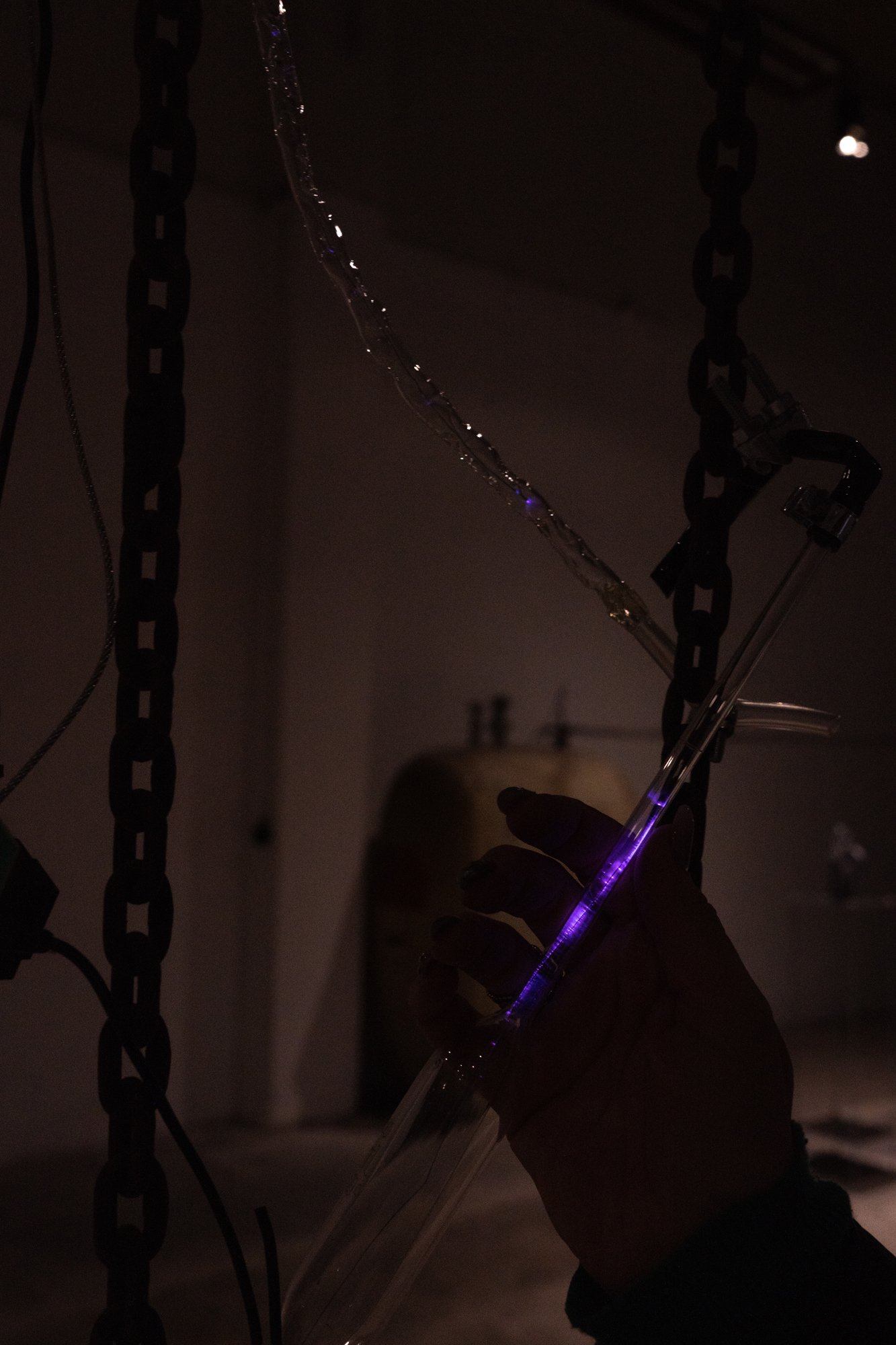
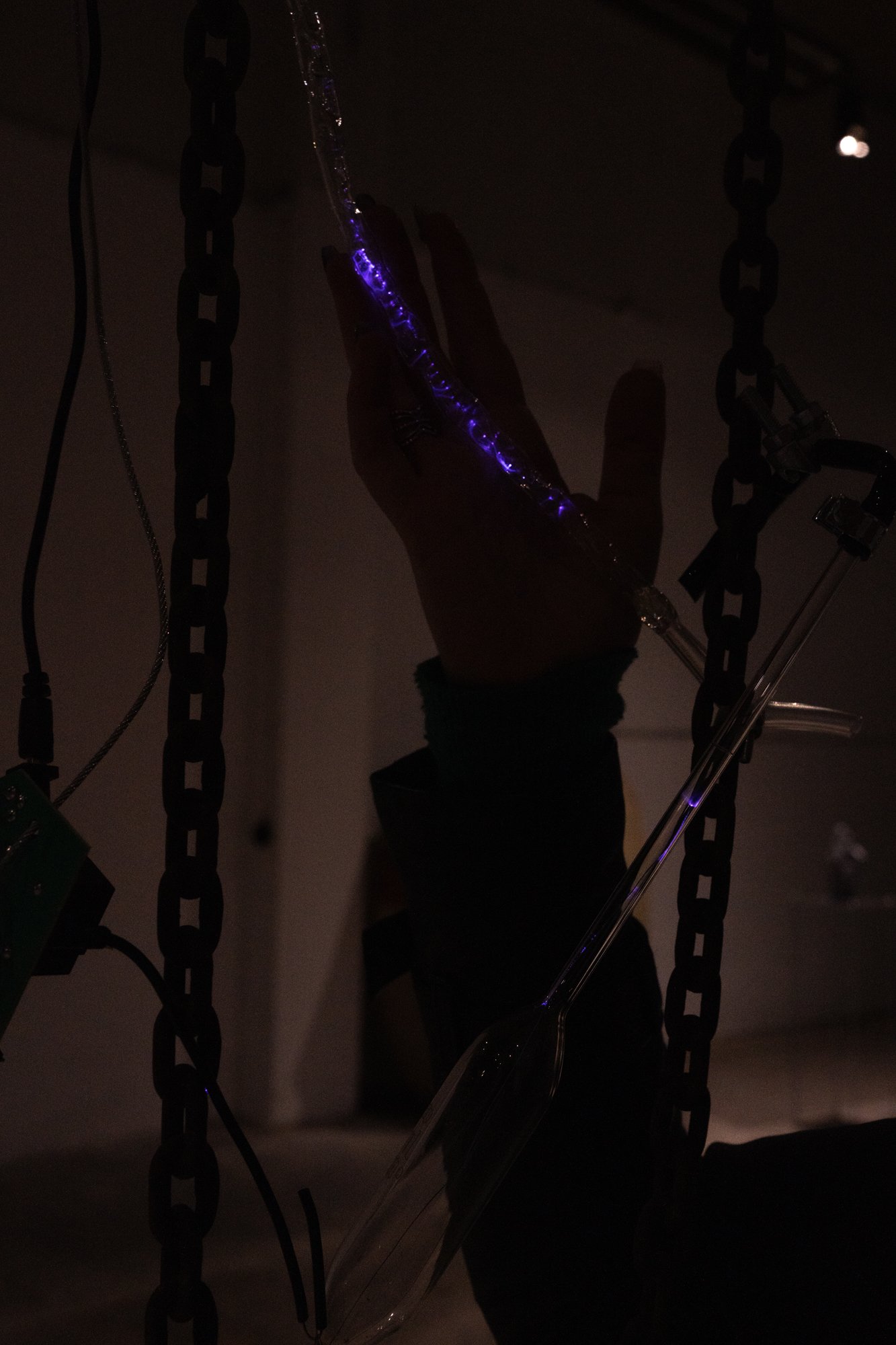
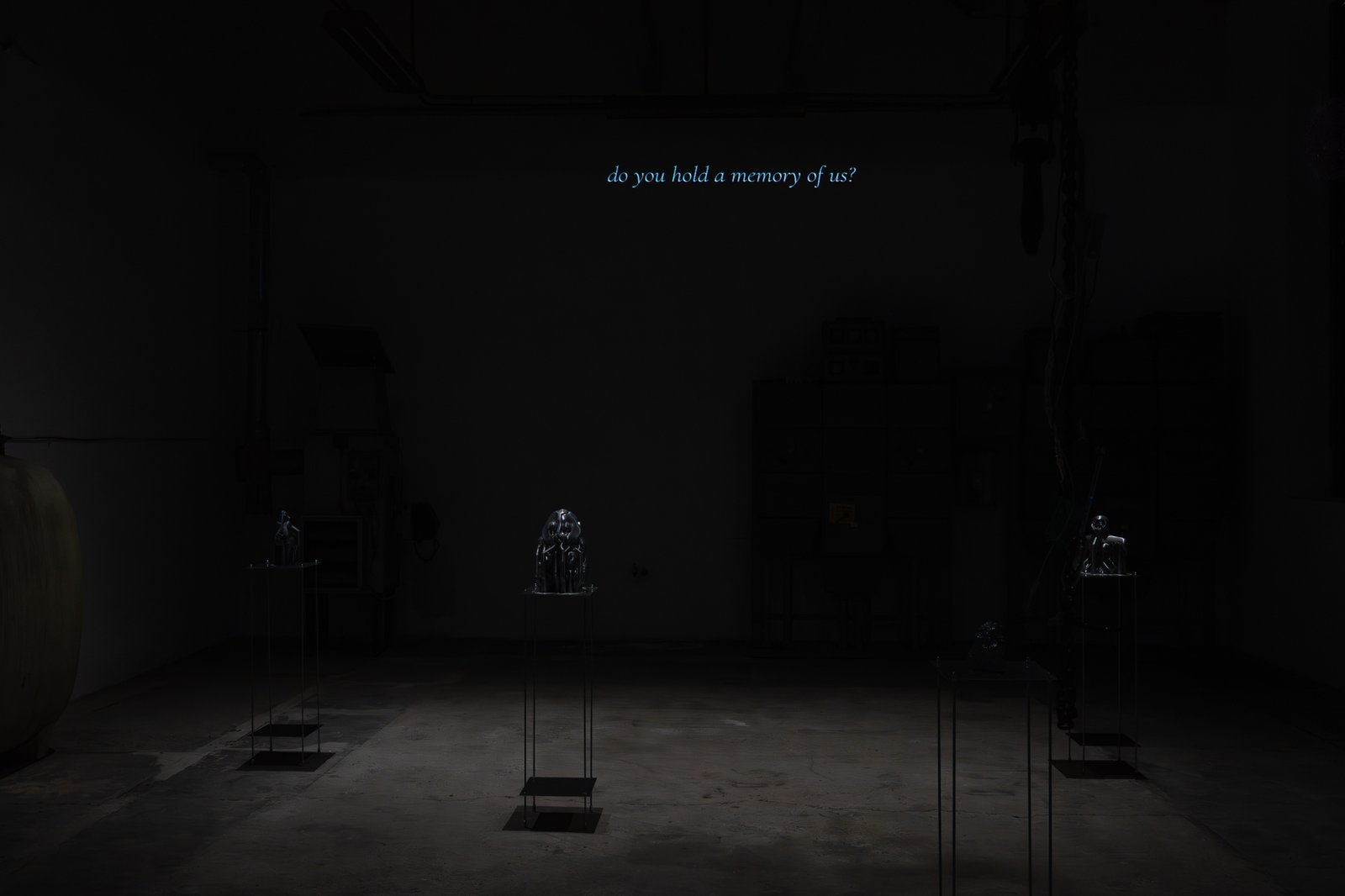

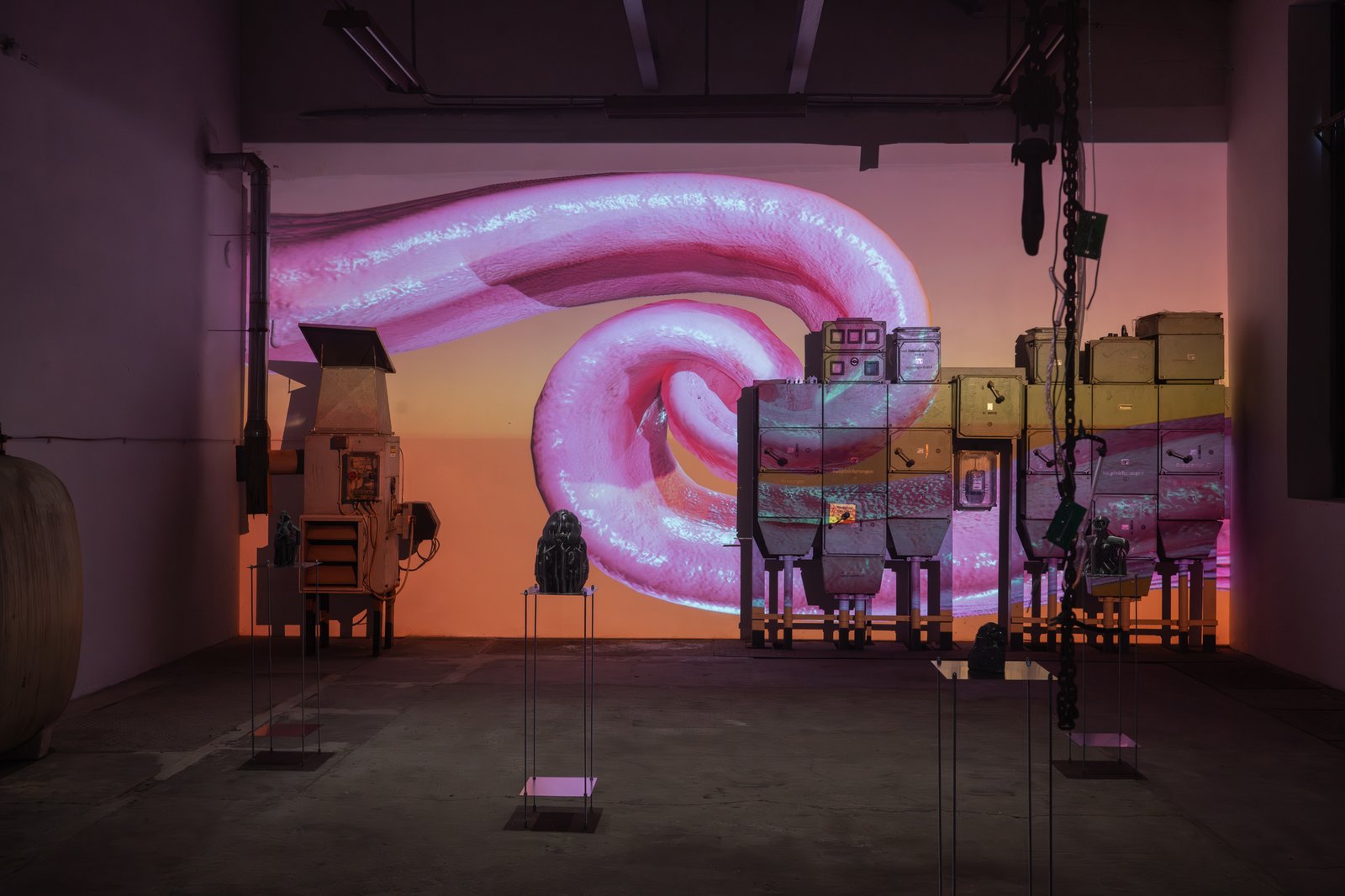
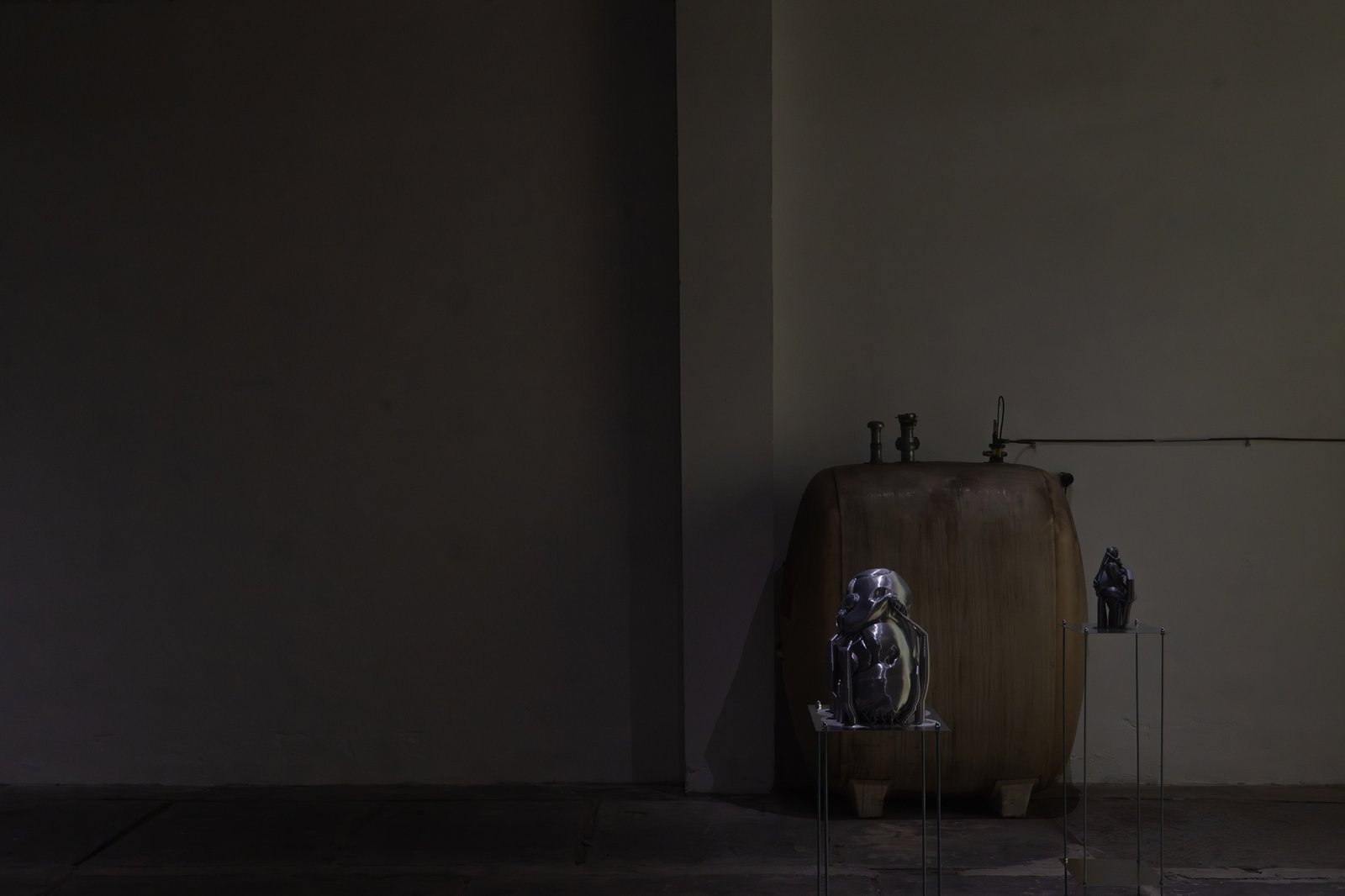
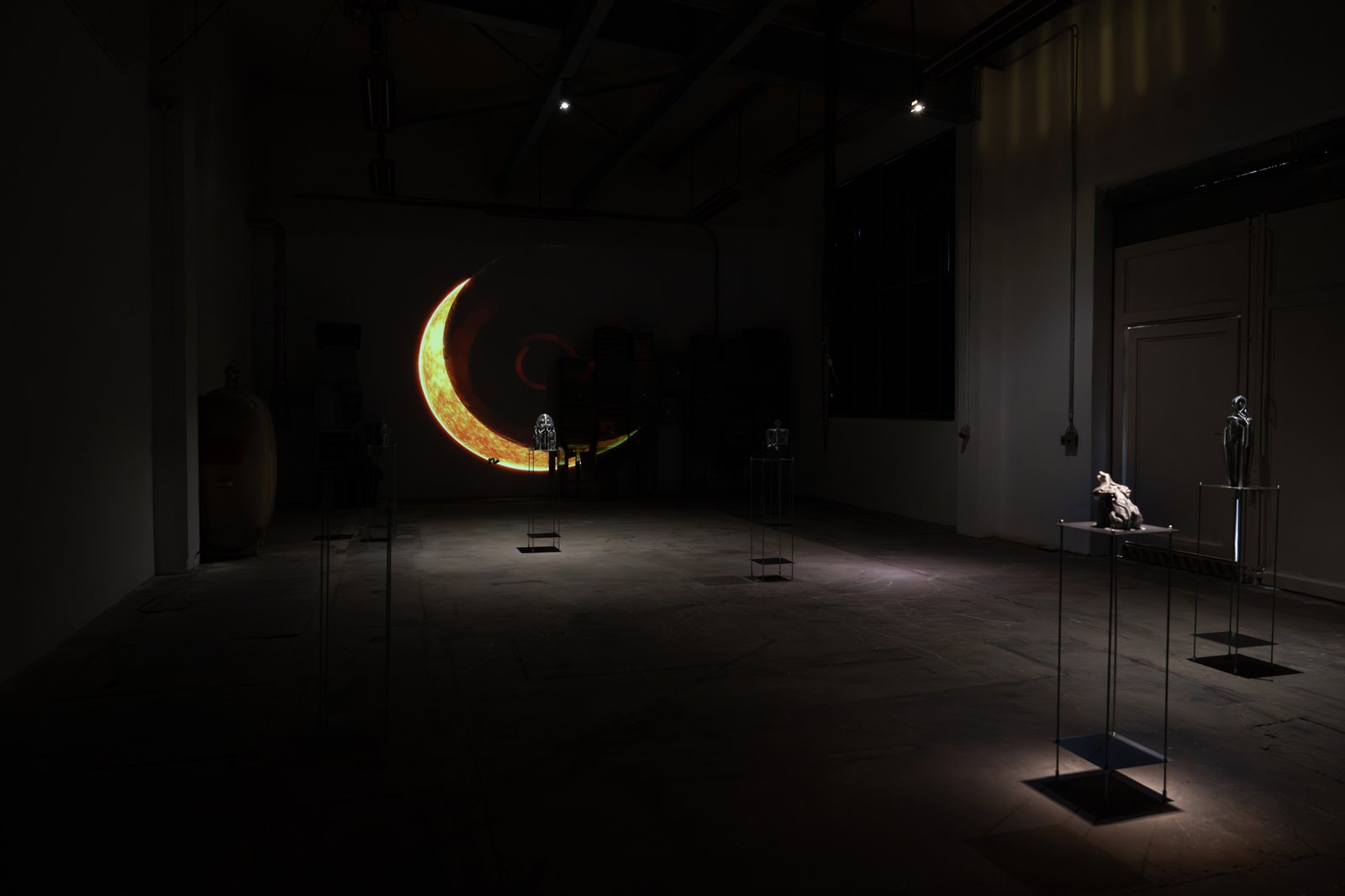
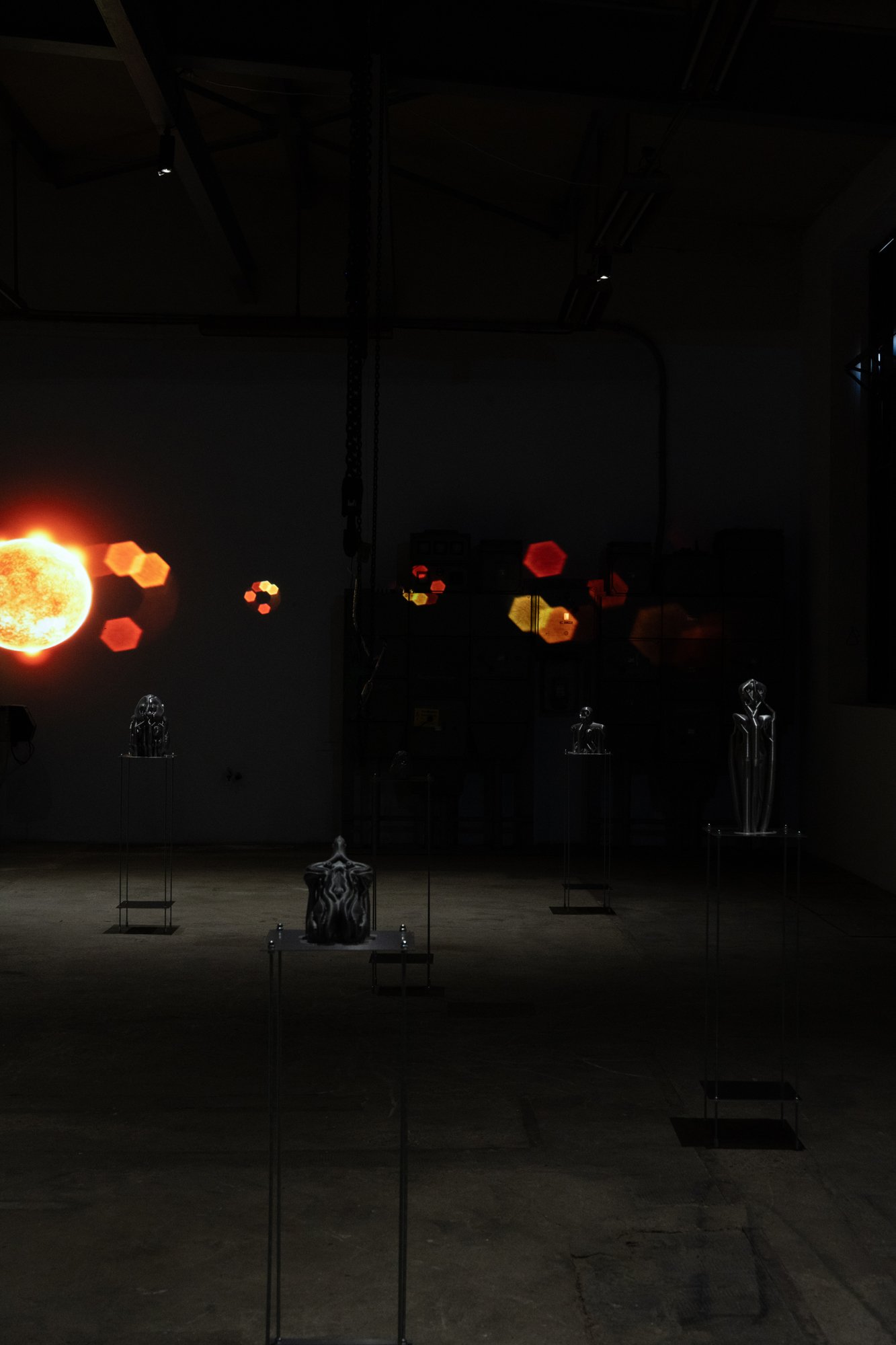
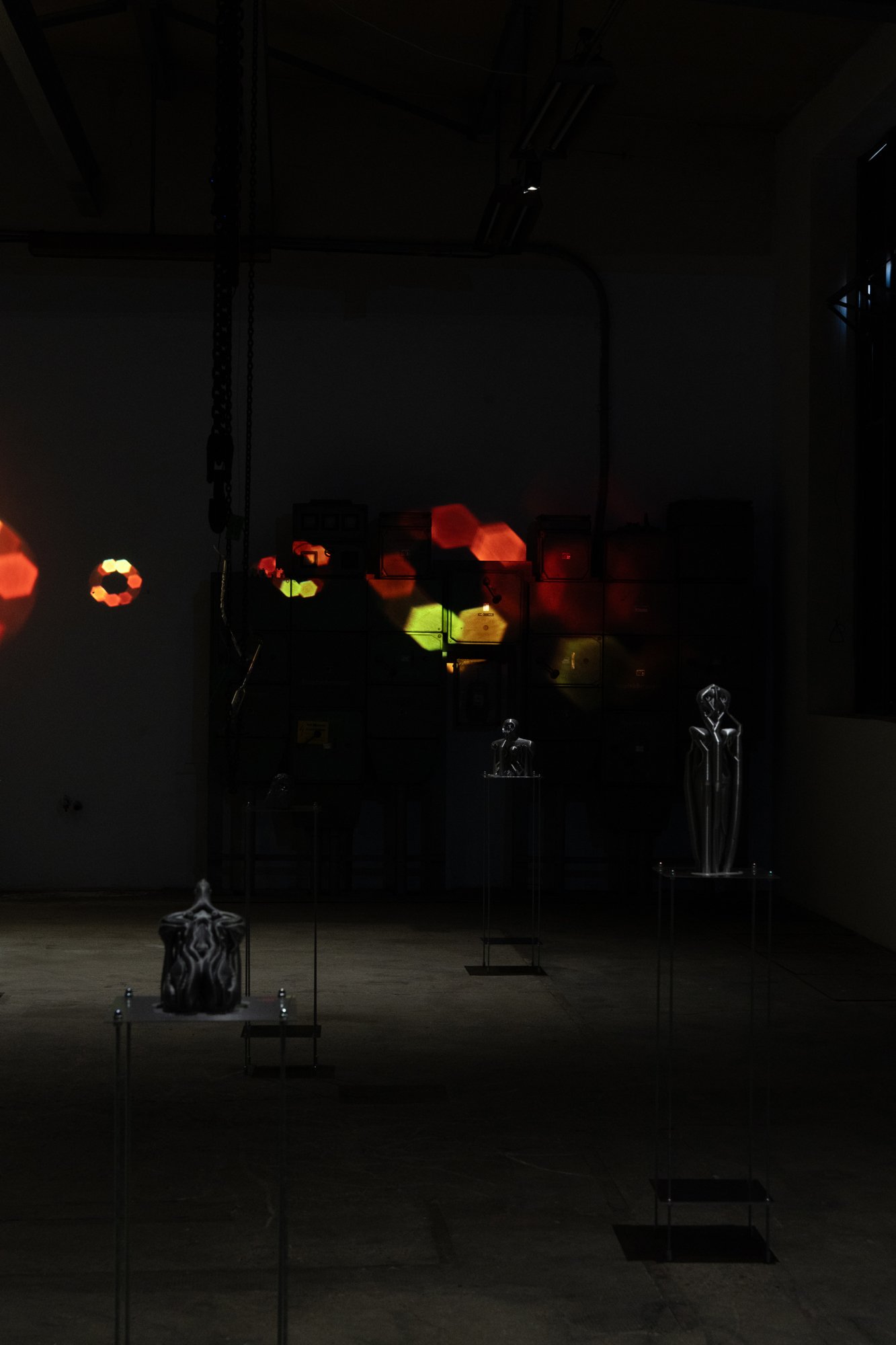
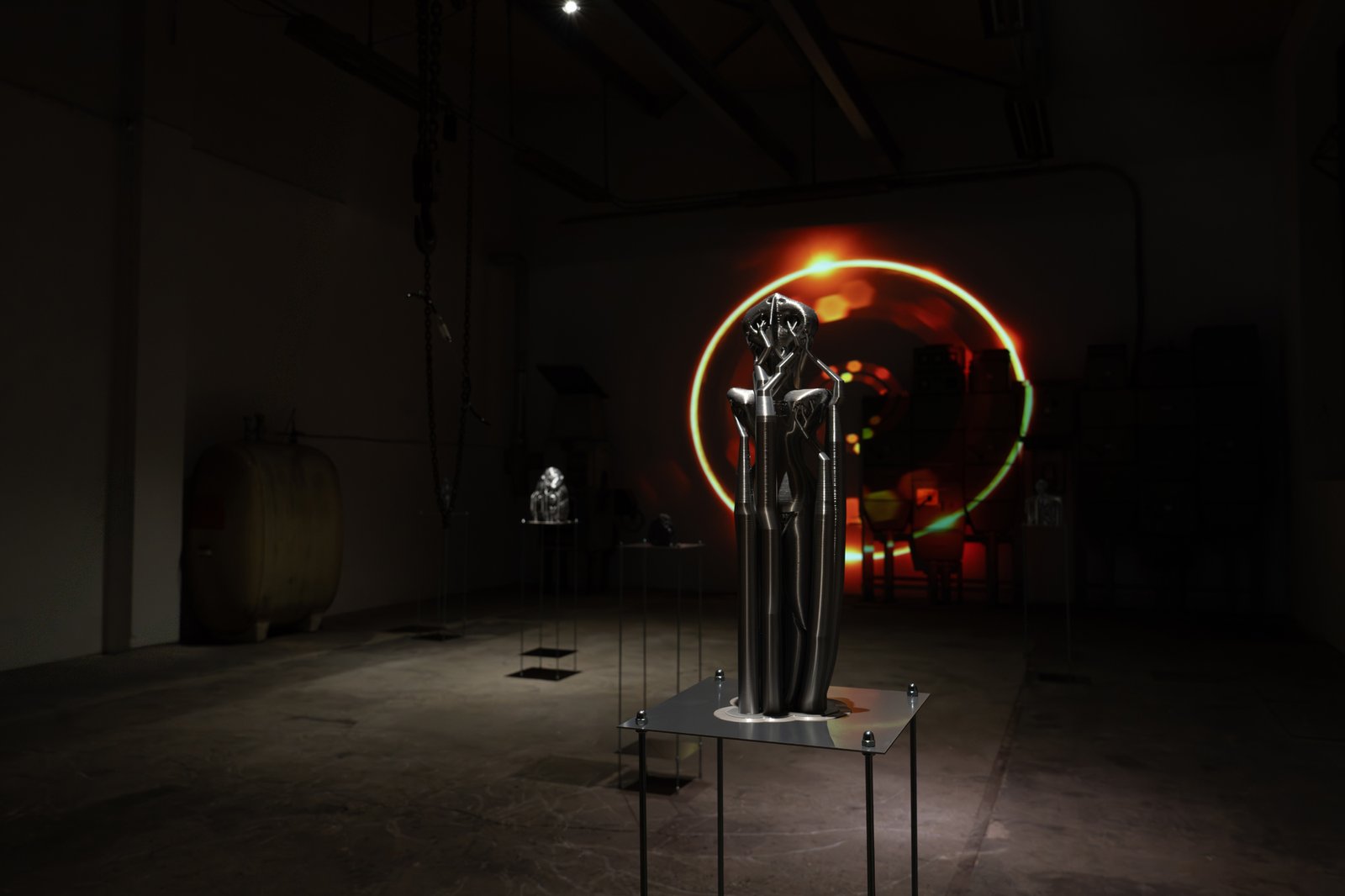









Brigita Kasperaitė’s ongoing artistic research explores alternative ways of living and organizing society, drawing on prehistoric cosmologies, symbolic systems, and material technologies to imagine other social structures possible in the contemporary world. Engaging with the framework of archaeomythology, her work bridges Neolithic goddess cultures and contemporary technological landscapes – where silicon stones, serpent motifs, and speculative reconstruction become tools for rethinking value, power, and relationality. Through this lens, she reconsiders how the symbolic and the sensual might guide us in shaping not only images and objects, but also ways of being together.
At the core of the exhibition is a series of 3D-printed goddess figures, modeled from the archaeological drawings found in Marija Gimbutas’ book Die Sprache der Göttin (The Language of the Goddess). These Neolithic figurines – symbols of fertility and birth, power, renewal, and death – are often only available to us in flattened, front-facing depictions. In digitally reconstructing their bodies, the artist not only gives them dimensional presence but invites us to reflect on the politics of image-making – on how history is imagined as much as it is recovered, and how myths become bodies again.
Through these Neolithic findings, the artist reflects on the stone landscapes that cover most of the Earth, and from there turns to the silicone stone – a lab-grown crystal made from purified quartz, used as a semiconductor in the production of chips, computers, and complex electronics. Invisible yet everywhere it becomes not just a technological component, but a symbolic agent in shaping our contemporary and future landscapes.
In the exhibition the viewers can experience a poetic and speculative video work called ‘Mother Tongue’ that opens with the threshold of a solar eclipse – a brief moment where light and darkness fold into one another, marking a point of cosmological transformation. From this liminal space, serpent-like tongues emerge to lick the burning surface of the sun. Their gestures are erotic, futile, and ritualistic all at once – an intimate choreography directed at an overwhelming celestial force.
The tongues carry multiple meanings: they are sensorial organs, tools of language, and mythic figures. Their movements suggest both care and desperation, invoking a kind of ancient ritual whose purpose remains unclear. Are they soothing the sun or stoking its fire? As they spiral and converge, a shared, sensual language begins to form – not built on words, but on touch, rhythm, and desire. This mother tongue is a language of becoming, one that precedes logic and transcends control.
The work draws from Neolithic symbolism, particularly serpent motifs and solar cycles associated with earth-based, matriarchal cosmologies. Yet its gaze is not backwards. Instead, it offers a contemporary myth, where ancient symbols are recharged through the lens of techno-cultural unease and ecological precarity. The sun, both a giver and destroyer of life, becomes a volatile protagonist; the tongues, its ambiguous interlocutors.
In ‘Mother Tongue’, the erotic becomes a mode of knowledge – not one that explains or defines, but one that touches, dissolves, and reshapes. The video resists linear time, favoring instead a cyclical rhythm that mirrors the spiral, the ritual, the regenerative power of fire. There is no beginning or end – only a continuous attempt to speak with, and through, elemental forces.
Brigita Kasperaitė positions this work within a broader exploration of symbolic, geological, and digital entanglements. Here, the body and the cosmos communicate in an affective loop – where destruction and renewal are intertwined, and where meaning emerges not from clarity, but from sensation.
music by Maximilian Breu ig: @lefou_knalli
installation team: Yannick Harter ig: @streitwagon & Eungbok Kang ig: @eungbok
